Best headphones for cycling: Stay entertained while riding
We have tested the best headphones for cycling so you can be entertained and stay safe when riding indoors or out
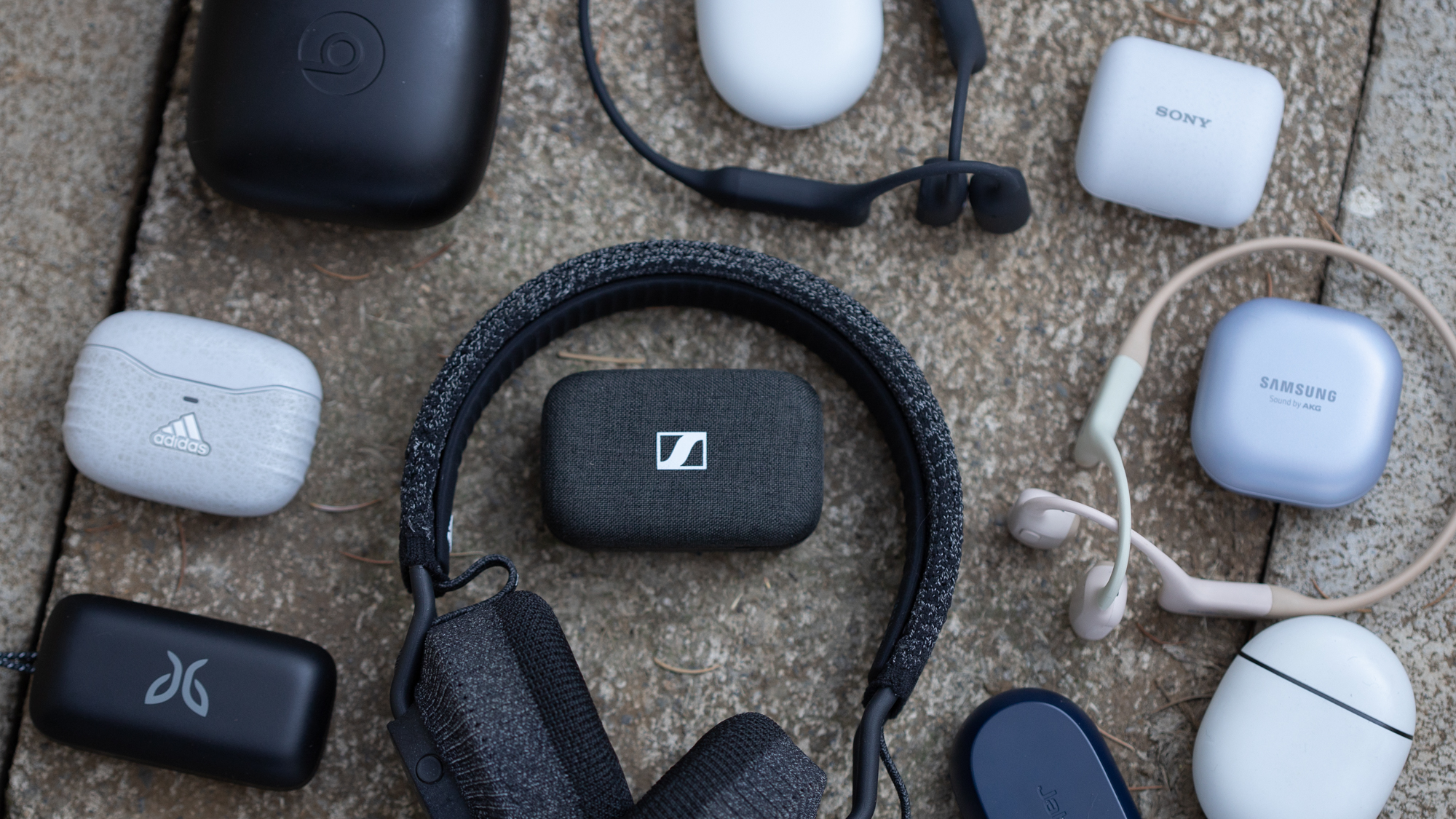
The best headphones for cycling are one of the few pieces of gear that see use both on the bike and off. From mid-ride soundtracks, indoor training motivation or catching up on podcasts and tuning into work calls during the week.
That means there are a lot of demands on the designs and sometimes those demands are competing. You want to find the best option for long, solitary, outdoor rides, but they also have to work when it's time to jump on one of the best smart trainers. You might want outstanding noise cancellation for some situations and exceptional situational awareness for others. Sometimes you need good sound quality and sometimes you just need something you can hear. No matter what, you need something comfortable.
With all these needs in mind, I've put in a lot of hours testing every different pair of headphones I can get my hands on. These days I have a pair of headphones on me at almost all times. I wear them on every ride outside, I test the mic options with a fan in front of my face, and I do indoor intervals until I'm dripping sweat to make sure they stay in my ears. Over the years I've found a few exceptional options that I consider the best headphones for cycling. These are my picks for listening to audio while riding a bike.
Quick list
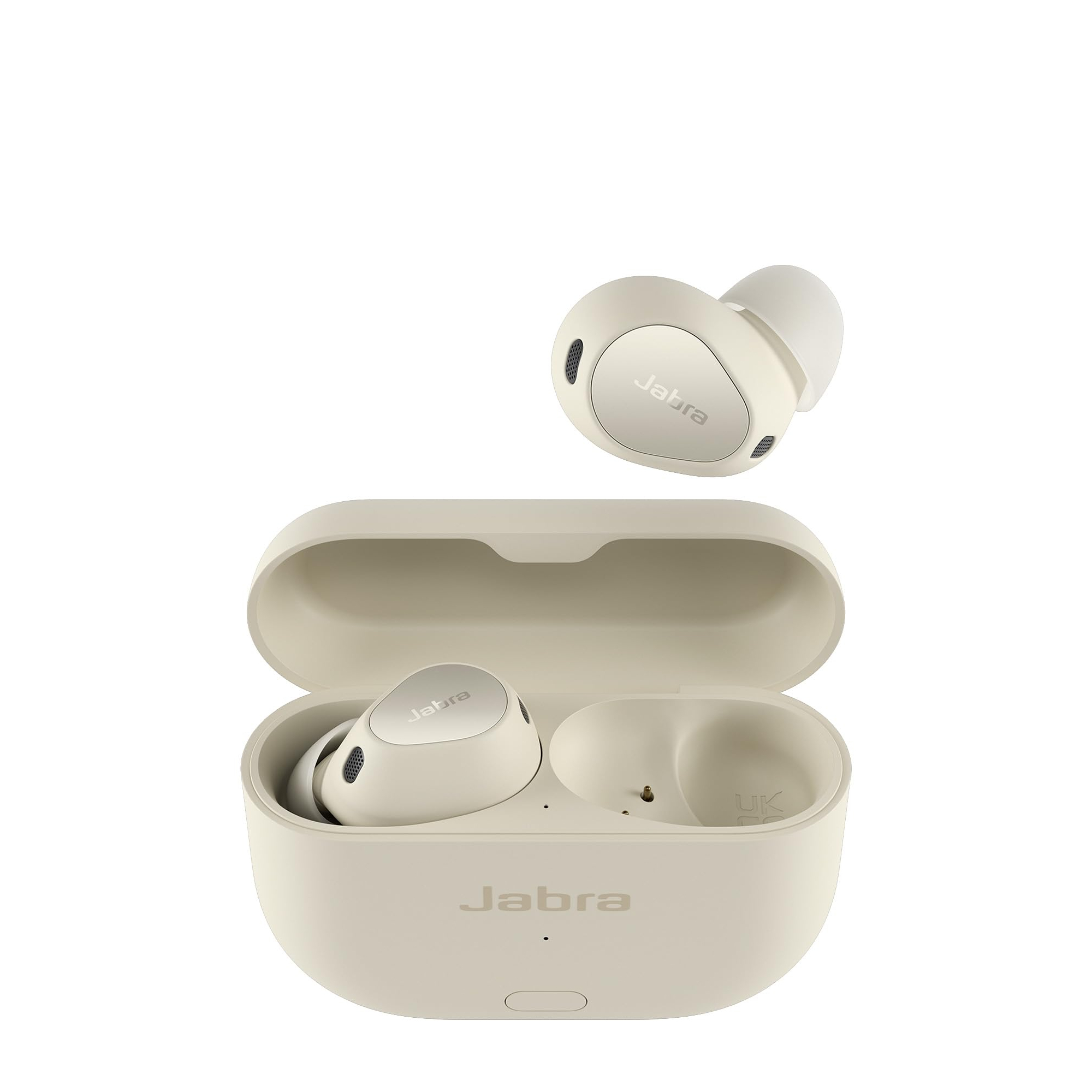
Just about every feature modern headphones have plus a microphone so good it will work while riding indoors or out.

Inexpensive but not cheap and integrated Tile tracker functionality is a feature even the most expensive options are lacking.
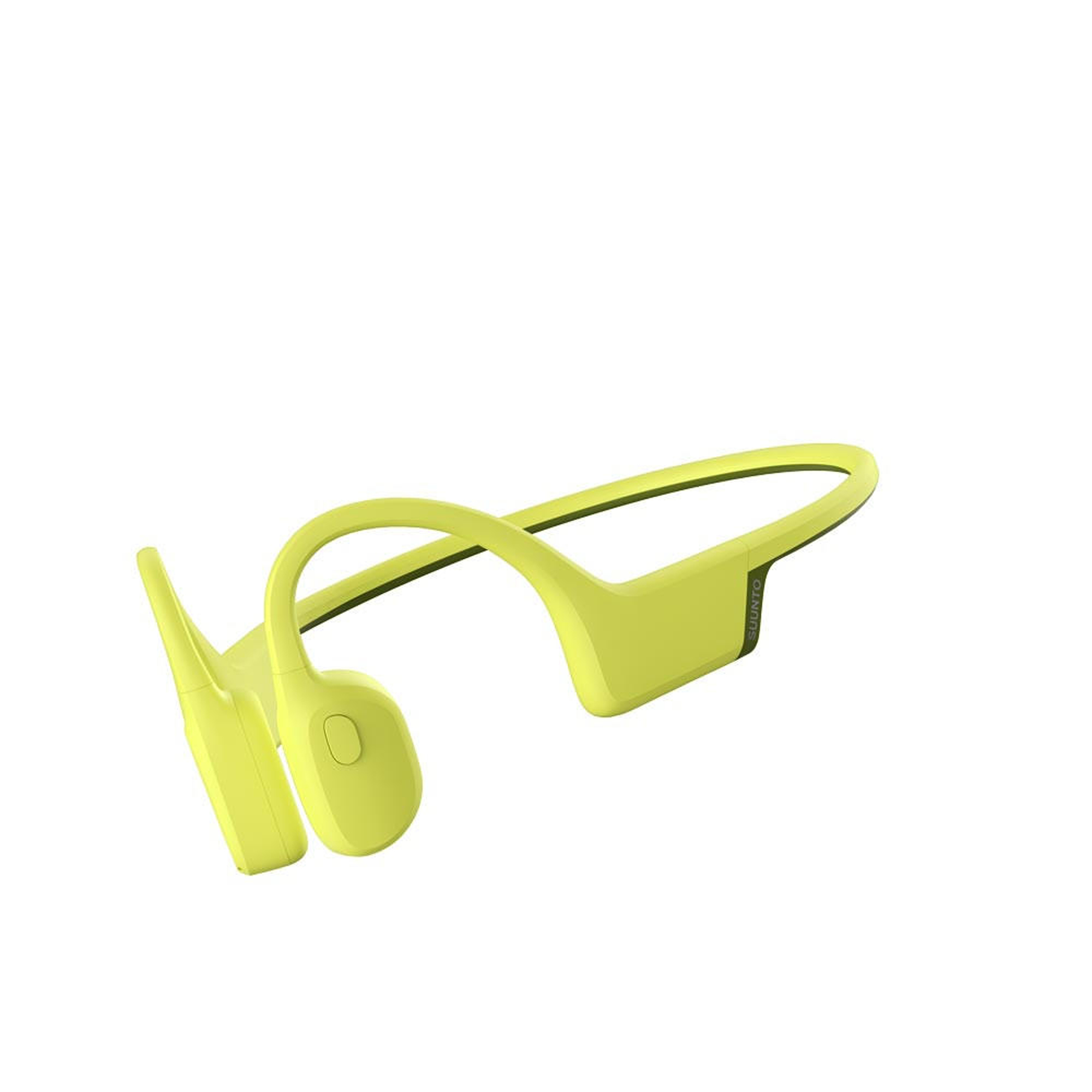
Retains situational awareness, has a mic good enough for talking while riding, and never gets caught on your collar or helmet even with an aggressive position.

With tight integration into the Android OS, the Pixel Buds Pro work really well for Android users, reading your notifications so you don't need to.

Never feel insecure even when you are at your sweatiest while riding inside plus long battery life, an excellent mic, and deep integration into the Apple ecosystem.
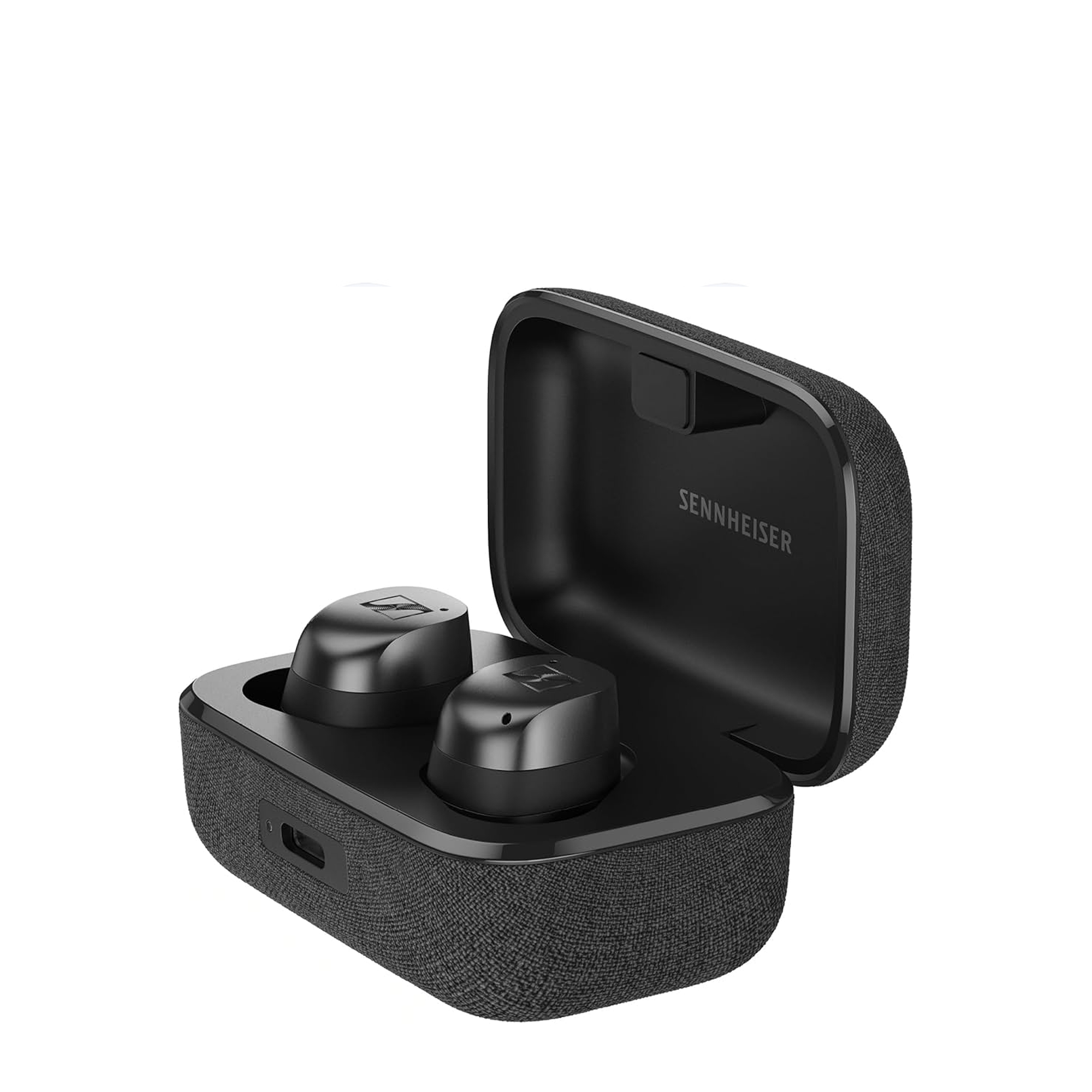
Larger drivers and support for the latest hi-res bluetooth codecs deliver great sound quality.
Last updated on 25th of March 2025 This guide was updated to ensure all the products were still available and up-to-date. Product images were updated to improve the overall look of the guide and the written content and format were given a general sense check.
Best headphones for cycling available now
Best all-around headphones for cycling

1. Jabra Elite 10 Gen 2
Specifications
Reasons to buy
Reasons to avoid
✅ You want to make calls: Jabra's 6-mic call technology gives the best mic performance for outdoor riding.
✅ You want excellent noise cancelling: the Advanced Active Noise Cancellation is two times more powerful so you can focus on your indoor training or work calls.
❌ You need extra-long battery life: The 27-hour combined battery life is decent, although there are options with longer total run time.
❌ You're looking for the best water resistance: IP54 rating will keep the rain and dirt out, just don't submerge them in water.
When I started working on this buyer's guide covering the best headphones for cycling I had one moonshot use in mind. I wanted to find a pair of headphones that left me sounding clear and audible even when riding inside with a fan, or two, pointed at my face. As I went through each option one at a time they all failed.
When Jabra Elite 10 came in for testing, I called my wife to check the call audio quality. I actually didn't believe her when she said she couldn't hear the fan in the background. I figured she'd gotten bored of these tests and wasn't paying attention. I called myself and made a recording just to double check and sure enough, you could clearly understand me!
The mic performance makes the Jabra Elite 10 completely unique compared to every other pair of headphones I've ever tested. Beyond that, the Elite 10 is the top model that Jabra makes and they've got everything under the sun. There's wireless charging and multipoint audio so you never have to think about which device you last paired and charging is easy. Despite being the all-around option compared to the sports-focused Jabra Elite 8 Active, these stay put even when sweaty and the IP57 rating is enough to handle sweat. The case even gets an IP54 rating so you can bring it in your jersey pocket for long rides and stay worry-free. When it's time to use them off the bike, there's double-strength active noise cancellation too.
The Jabra Elite 10 Gen 2 only fall short in a couple of minor areas. Although the combined 27-hour battery life (or 36 without ANC) is long, it's not the longest out there. But Dolby head tracking adds spatial depth to your music and that's a pretty amazing consolation.
If you prefer extra water resistance, the Jabra Elite 8 Active headphones are a worthy alternative. Jabra claims that they will stay put whatever, thanks to a silicone rubber coating, they're totally waterproof and can survive immersion in 1.5m of water.
Best budget headphones for cycling
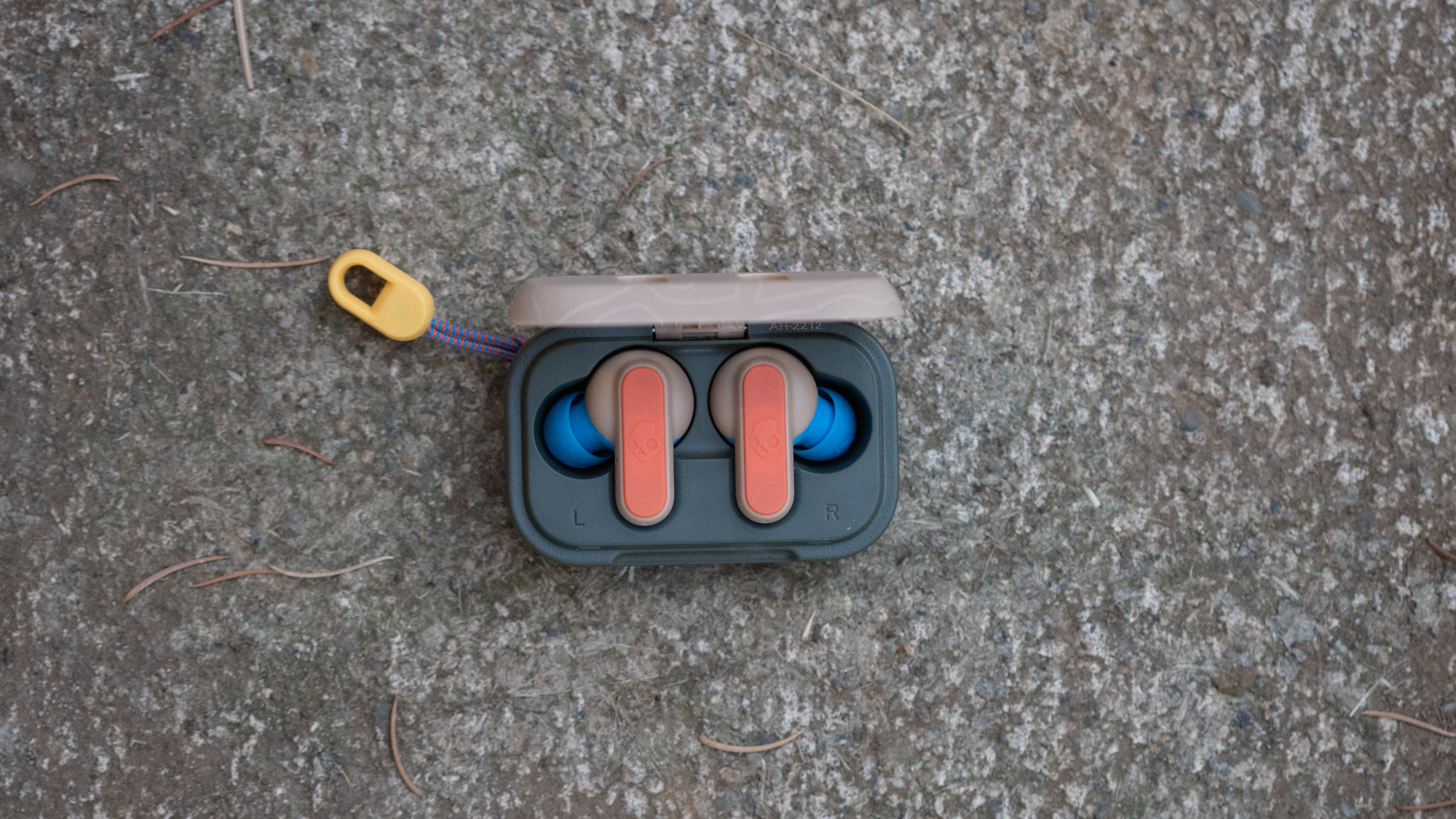
2. Skullcandy Dime 2
Specifications
Reasons to buy
Reasons to avoid
✅ You want a name-brand budget choice: Skull Candy has built up a reputation for making great quality affordable earphones.
✅ You lose your earphones: The in-built Tile tech helps you track down the earphones if they go missing.
❌ You want longer runtimes: The combined 12-hour run time is limiting.
❌ You are looking for advanced audio features: No ANC means sound quality will be affected by surrounding noise.
There is an endless number of cheap true wireless headphones available. The names constantly rotate and you have no idea if they are good or not. I wanted to make sure to include a budget option but I wanted to find an option from a quality brand known for excellent support.
The Skullcandy Dime 2 are true wireless headphones that will absolutely do the job of providing music while you ride and they do it at a bargain price. They also come from a company with a name you can stand behind. My son has used a variety of Skullcandy headphones for years and any time they've had an issue, the brand was an email or phone call away and never a hassle.
The products Skullcandy makes are inexpensive but they aren't cheap. The sound of these won't match the Momentum 3 True Wireless although it's entirely workable plus the Tile support shouldn’t be overlooked. That’s an amazing feature that would be welcome on every pair of true wireless headphones on this list. There's no ANC or HearThrough but at this price point, that's expected. No matter the price point, micro-USB is a technology that's behind the times.
Best bone conduction headphones for cycling
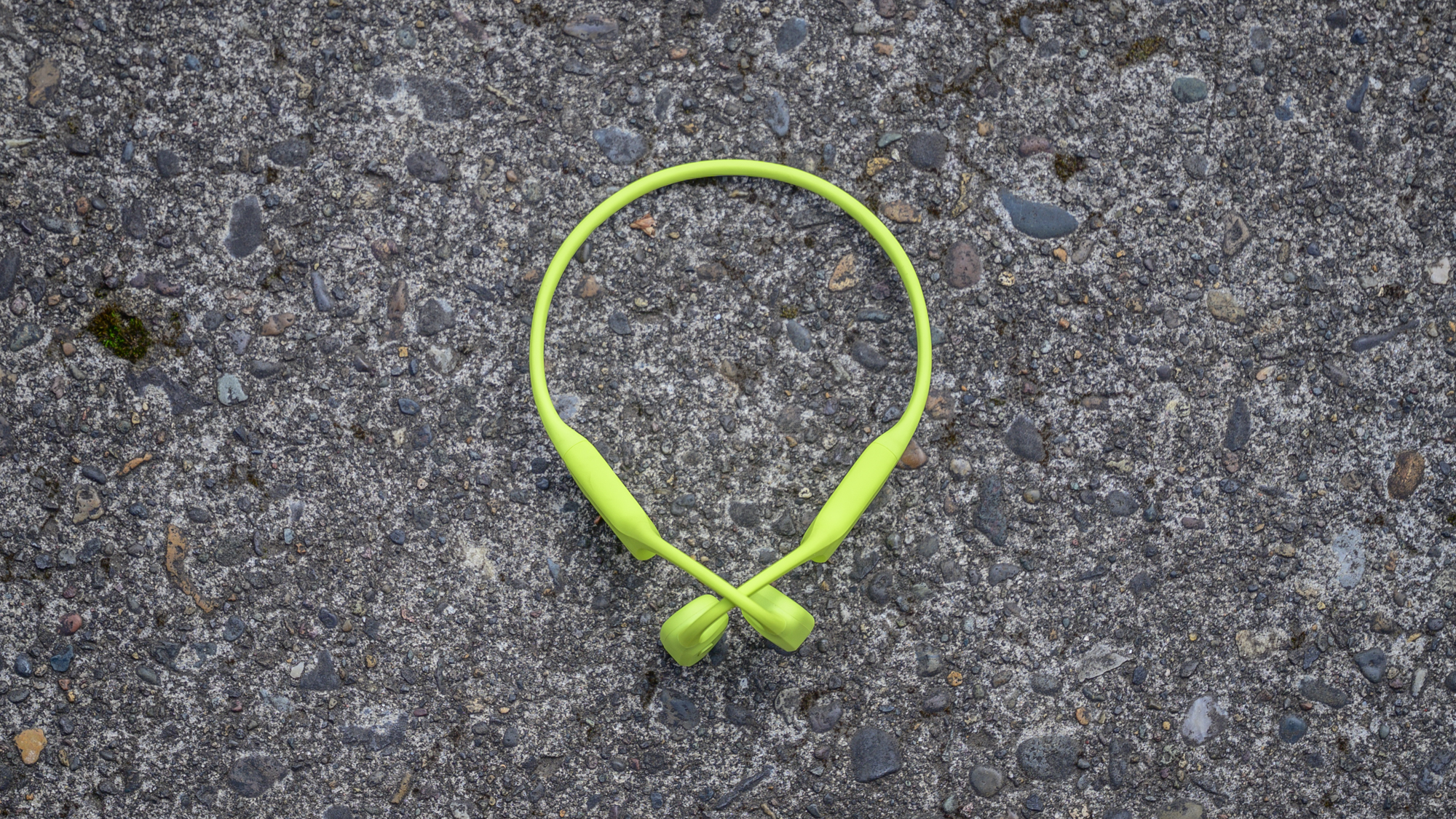
3. Suunto Sonic
Specifications
Reasons to buy
Reasons to avoid
✅ You want the best bone-conducting capability: Open ear design allows you to listen to music while still being fully aware of your environment.
✅ You want a secure fit: The over-the-ear single-piece design gives a comfortable fit with no risk of losing an earbud while riding.
❌ You want longer battery life than ten hours: 10 hours off battery is impressive, but there is no charging case for extending battery life on the move.
❌ You don't want a proprietary charging cable: They are charged using a specific magnetic charger, rather than USB-C or a charging case.
Before I started testing bone conduction headphones, I never liked riding with headphones outside. Keeping only one earbud in is a completely workable solution but it's cumbersome compared to bone conduction. When you have them off, you can't tell they are there. When they are on, you can still hear what's happening.
That's all true for any bone conduction and Shokz has traditionally been the big name to beat. Recently, though, Suunto has come out with similar products that are even better. The Suunto Wing is amazing if you need to ride more than 10 hours but the Suunto Sonic covers the rest of the time with a smaller band that won't catch on your collar or helmet. Since 10+ hours of riding isn't something most people need, the Sonic is the best choice for most people when riding outside.
Compared to Shokz, you get multi-point Bluetooth connections and an excellent mic. Those two features change the use case from only solo rides outside to a workable indoor solution also. The mic is good enough that it handles a fan blowing at it during an indoor ride and you can even answer a call outside without needing to completely stop riding. If you are riding inside, though, you might want to connect to one device to run Discord and music while still being able to answer your phone if you get a call mid-ride. The Suunto Sonic allows that to work.
The only downsides to the Suunto Sonic are around the charging. The Suunto Wing comes with a USB-C battery pack that lets you easily charge mid-ride. That battery, though, also means you can mostly forget about needing the proprietary charging cable and instead just charge off the pack and a USB-C cord. Unfortunately, the Sonic loses that feature, leaving you to keep track of the special magnetic charger.
Shokz is the main alternative to Suunto. Its latest Openrun Pro 2 includes its tenth-generation tech, which Shokz claims offers groundbreaking audio performance and increased fit comfort. It's available in standard and mini-fit.
Shokz has increased runtime to 12 hours and five minutes of charging gives 2.5 hours of claimed usage. The Openrun Pro 2 is IP55 water resistant. Better still it's the same price as its predecessor, but available in three colours rather than one.
Best Android headphones for cycling

4. Google Pixel Buds Pro
Specifications
Reasons to buy
Reasons to avoid
✅ You want native adjustability: Features and controls are customisable within the Android settings.
✅ You value message reading from your phone: Listen to your messages without needing to stop riding to get your phone out.
❌ You're an Apple user: Most of the features are Android-specific.
❌ You have an older Pixel phone: You need a newer Pixel handset to get the full features of the Bud Pro's such as spatial head tracking.
There's nothing here that's not compatible with Android phones but the Google Pixel Buds Pro take compatibility to another level. With wireless headphones the typical system is to connect via your phone's Bluetooth menu and through a companion app. Multipoint audio will seamlessly switch between devices but if you need to make adjustments, it will happen in an app on your phone. In this case though, there's no app needed.
That's nice because the companion apps are a mixed bag, to say the least. Sometimes they work fine but sometimes they are absolutely maddening. Because Google builds both Android and the Pixel Buds Pro all the functionality is directly integrated into the operating system. Jump into the Bluetooth menu and right there you can adjust things like how the touch controls work, no secondary app needed. The Pixel Buds Pro will also read your notifications as they come in, so you don't need to wonder if it's worth checking what it is.
The negative side of all that integration is that one of the best features only works with certain phones. Like the Jabra Elite 10, Google offers spatial head tracking features on the Pixel Buds Pro but in this case, it only works with newer Pixel phones. Pixel A series doesn't work and neither do non-pixel phones. It's a shame because that feature feels a bit like magic when you experience it.
The other negative is that when things get extra sweaty, the Pixel Bus Pro can get slippery. I've never actually lost one but you do feel like you need to adjust them quite a bit.
Best iPhone headphones for cycling
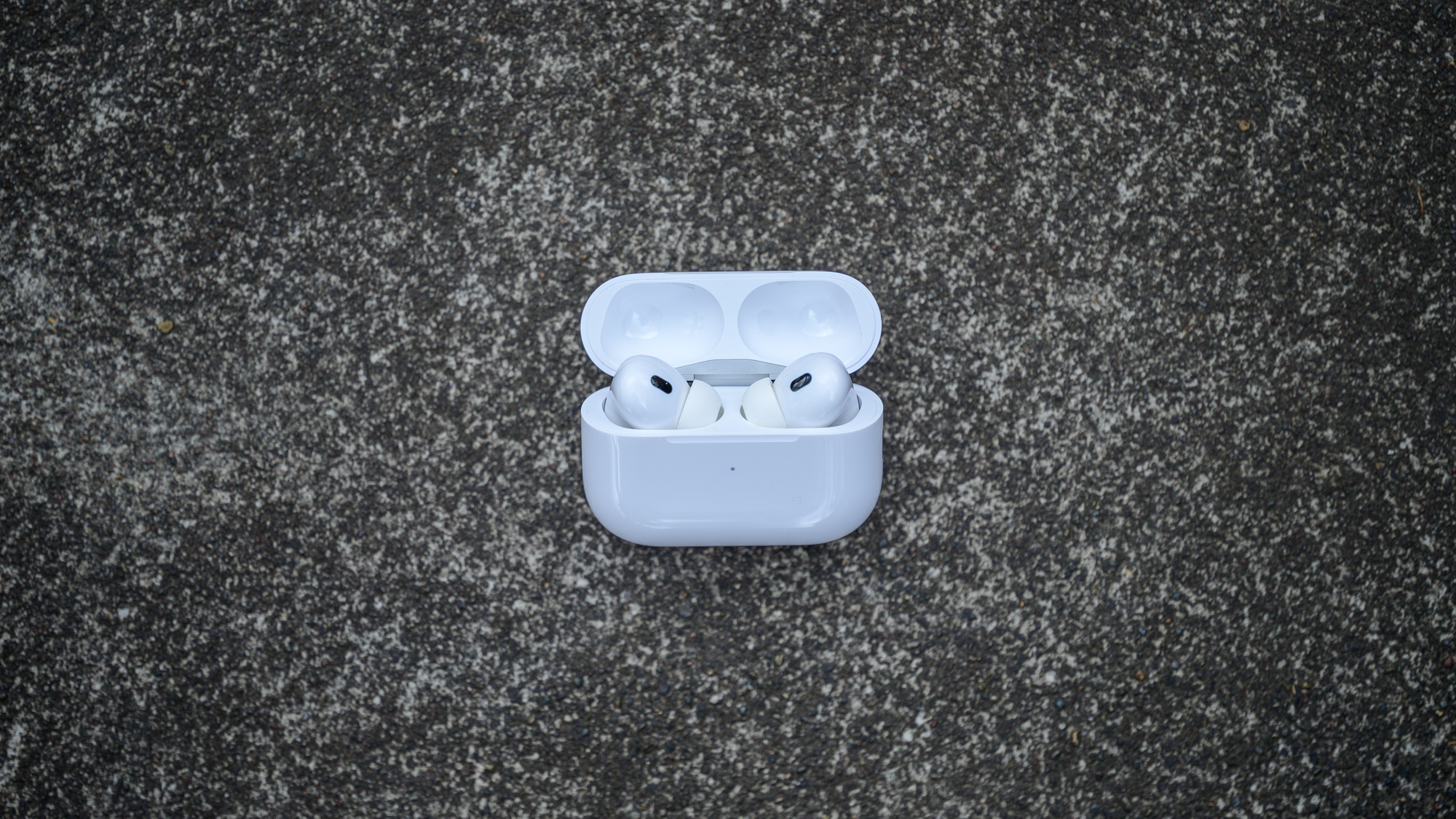
5. Apple Airpods Pro 2
Specifications
Reasons to buy
Reasons to avoid
✅ You have an iPhone: Airpods Pro 2 sync perfectly across all Apple products for seamless control.
✅ You want ANC options: Airpods feature transparency, Adaptive and complete Noise Cancellation to tailor how much of the outside world you can hear. There is also a Conversation Awareness feature that detects when your talking and lowers the volume.
❌ You're an Android phone user: Most features are restricted to iOS users.
The second-generation Apple Airpods Pro are so good that it's almost worth considering them for non-Apple devices. Before anyone gets any ideas though, it's not actually worth doing that. There are a number of missing features and a lack of actual multipoint connections when not connected to an iPhone. If you are using an Android phone there are better options. For anyone in the iPhone ecosystem, though, the features are incredible.
The current version of the Airpods Pro has said goodbye to lightning cable charging and picked up all the latest tech. There's now support for wireless charging, both Magsafe and Qi, as well as a USB-C port. On top of that you've got all the expected features of a high-end pair of headphones like spatial audio, in-ear detection, high-quality active noise cancelation, and conversation awareness to quiet your music if you start talking. When it comes to exercise though, those aren't the main attraction.
When you are on a bike, either inside or out, the Apple Airpods Pro offer security, a quality mic, and an IP-rated case. That means if you get a phone call, or want to chat with friends while riding indoors, the mic is good enough to handle wind or a fan with no issues. This is a detail I highlight on a number of devices because only a year ago, it was unheard of. Now, there are a few options that work this way and the Airpod Pros are one of them. You also get one of the most secure fits so you never have to worry about slipping, even when sweaty, and the case has the same IP rating as the earbuds. That means no worries about sweat destroying the case while it's in your jersey pocket as you ride.
As far as downsides, there's essentially none if used in a fully Apple ecosystem. If that's you then no problem as all the features work and you can switch seamlessly between devices. On the other hand, if you have a Windows work computer and a Garmin watch, as examples, you'll have a hard time switching between devices and you'll lose features when you do.
Best headphones for cycling with long battery life
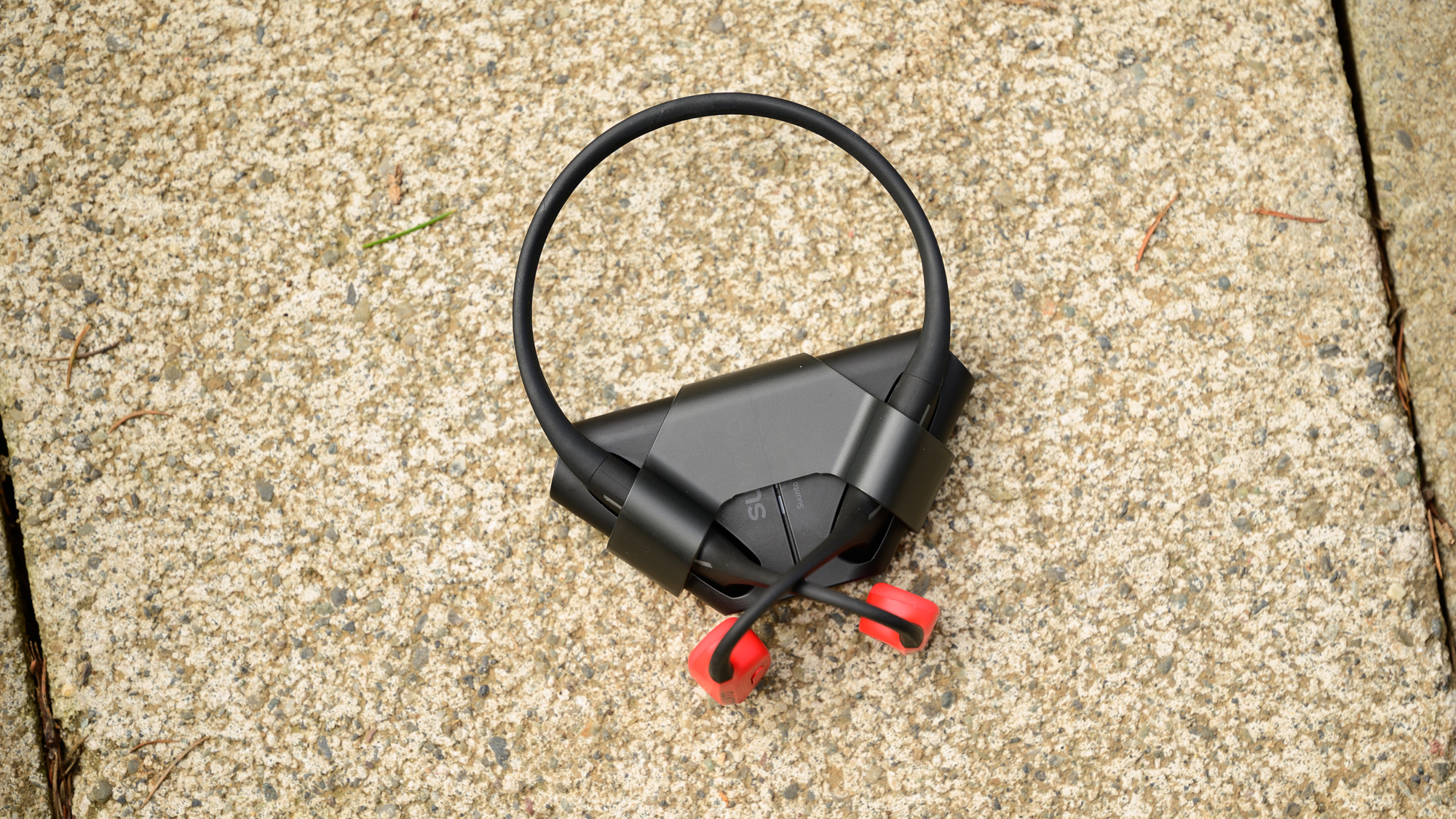
6. Suunto Wing
Specifications
Reasons to buy
Reasons to avoid
✅ You want long battery life and on-the-go-charging: Most people aren't riding for longer than 10 hours, the Wings get an additional 20 hours from its external nattery pack. 10 minutes of charging gives you 3 hours of audio.
✅ You want gesture control: Hands-free control allows you to control your music with head movement.
❌ You want a shorter collar to fit with a helmet: Long band may interfere with long hair or helmet cradles.
As I've updated this list over the years, I've switched away from Shokz bone conduction options in favour of Suunto. The two are very similar and now Suunto has the Sonic for those who need a smaller band to avoid hitting a collar on an aggressive race bike. Even with the Sonic also included though, the Wing still has a place here on the list.
For me the biggest advantage is the charging system. While both options use a proprietary adapter, the Suunto Wing includes a power bank. The power bank means you don’t actually ever need to use the proprietary charger. Instead, just pop them on the power bank and when it’s time to charge the power bank, you can use a standard USB-C cord.
More than ease of use, the power bank solves a very particular issue for me. While I love the Suunto Sonic headphones, I can’t use them on really long rides. I understand 10 hours is likely fine for a lot of people but it’s not always long enough for me and there’s no simple way to take advantage of the quick charge function while riding. The IP55 rating of the Suunto power bank means I can bring it with me on a ride and use it to top up the headphones. If you find yourself in situations where you need more than 10 hours on runtime, the Suunto Wing is a better choice.
On top of that, you do get the same features plus a few more compared to the Sonic. Both the Wing and the Sonic have an excellent mic that's unbothered by wind, plus multipoint Bluetooth connections. The Wing adds gestures like shaking your head to answer calls plus lights on the headphones that add visibility.
The only reason I continue to include both bone conduction options, despite the extra features of the Suunto Wing, is that the Sonic has a smaller band. As I mentioned above, the long band gets in my way but if you’ve got longer hair, you might actually appreciate the longer band.
Best hear-through true wireless headphones for cycling

Specifications
Reasons to buy
Reasons to avoid
✅ You value spatial awareness: Better sound quality than bone conduction whilst still hearing the world around you.
✅ You have sweaty ears: The fit remains secure no matter how sweaty your ear canals get.
❌ You want the best isolated sound quality: Audio quality isn't able to match earbuds with ANC, especially in noisy environments.
❌ You want long battery life: Sub 20-hour combined battery life is short, especially as the earbuds themselves only offer 5.5 hours.
There's nothing like having your ear open if you want to be able to hear what's happening around you. You can try to use hear-through modes or take one earbud out but just having your ear open is the best and it's why bone conduction headphones are so good on a bike. If you like the idea but want something that's more useful in the rest of your life, then the Sony Linkbuds bridge that gap.
The design puts a small circular opening right in the earbud piece that normally seals the ear canal. It works well and coupled with a variety of different-sized wings, it does a great job of staying put, even when sweaty. It allows you to use them similarly to bone conduction headphones and just leave them in. When you want to listen to music, hit play. When you want to talk, hit pause and you can hear just fine.
The challenge with these headphones in general, is that they bridge the gap between two systems so they aren’t quite as good as either option. You’ll never get really high-quality isolated sound but your hearing is also slightly more impinged than with bone conduction headphones. The upside is that you get all the packaging advantages of true-wireless headphones while preserving spatial awareness. If that trade-off works for you, then there’s nothing else on the market that matches these.
Even if the general concept works for you, there are still some details to be aware of. Nothing major but the small size means lower battery life and there are some oddities around the way the app works for assigning buttons when you only use a single earbud.
Read more details in our Sony Linkbuds review.
Best over-the-ear headphones for cycling
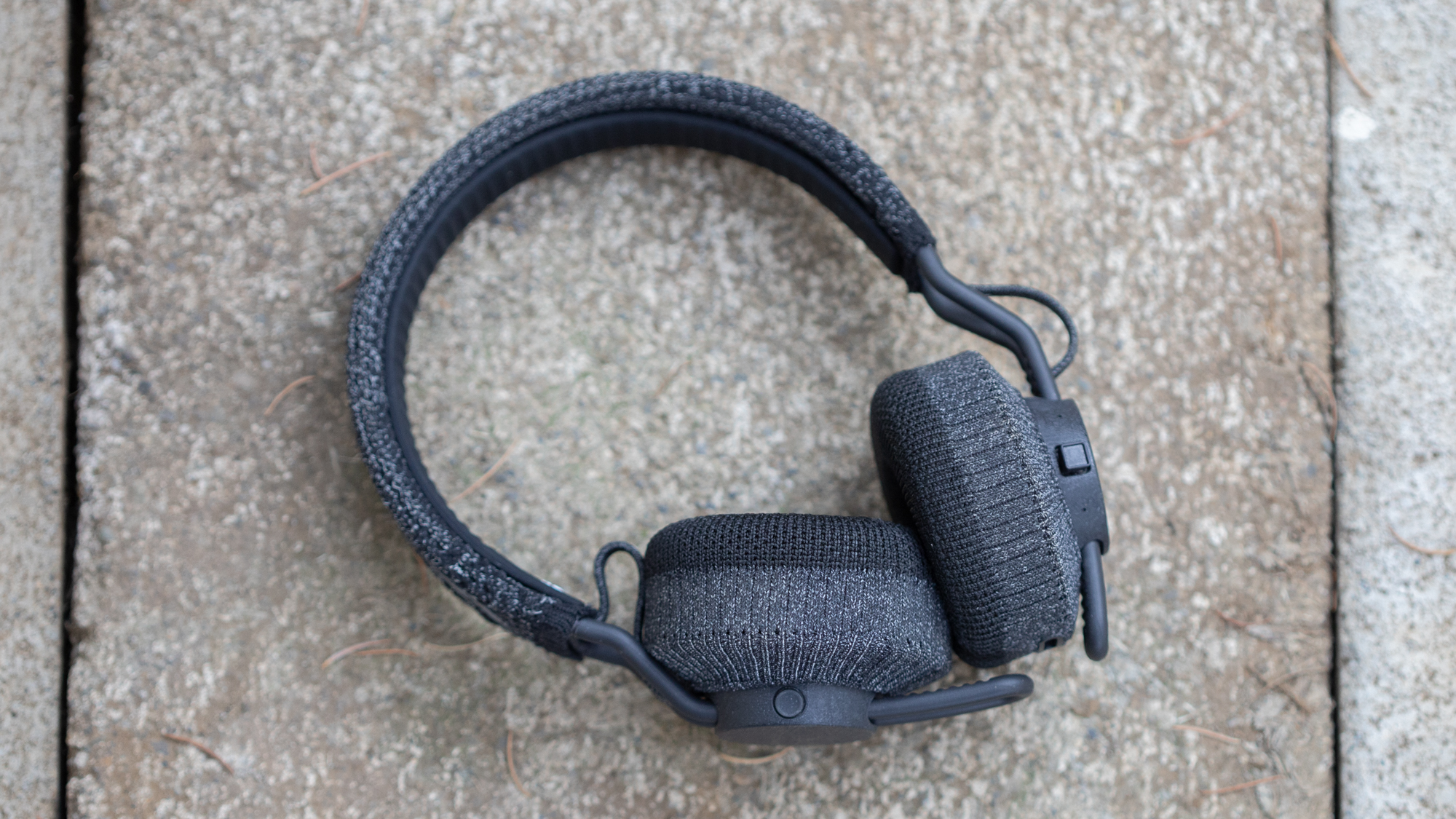
8. Adidas RPT-02 Sol
Specifications
Reasons to buy
Reasons to avoid
✅ You want an over-ear design: The over-the-ear design is great for blocking outside noise.
✅ You are looking for huge battery life: With up to 80 hours of run time, these give you unmatched listening time.
❌ You find pressure on your ears tiring: If you find yourself crushing hours upon hours of Zwift you may prefer earbuds or lighter-weight headphones.
❌ You want to use a helmet outdoors: Obviously, headphones aren't compatible with helmets, so we don't recommend these for outside use
True wireless earbuds are incredibly convenient and that's especially true on a bike. You can make them work even with a helmet and sunglasses and at other times they are simple to bring along given their small size. One challenge with them is that people might not know you have them in. If you are working out at the gym, you might want to make it very obvious you are using headphones and in that case, over the head is best. Finding sports-specific over-the-head options is a bit trickier but Adidas has the RPT-02 Sol as the perfect answer if you want this style for indoor riding.
The add-on benefit of the over-the-ear design is that there’s more room. The drivers are larger and the sound quality is outstanding. Hi-res audio codec support only helps in that regard. Along with sound quality, the larger design also means more battery space and room for solar cells. There’s up to 80 hours of battery life and solar cells in the band mean you rarely have to charge. Even the interior light is enough to keep these topped up.
The exterior of the earcups has a fabric cover and it's removable when it's time to wash it. The only thing to watch out for is that the ear cups sit on top of the ears instead of around them and the band provides pressure to keep the headphones in place. The effect is tiring on your ears when worn for extended time periods.
Best audiophile headphones for cycling
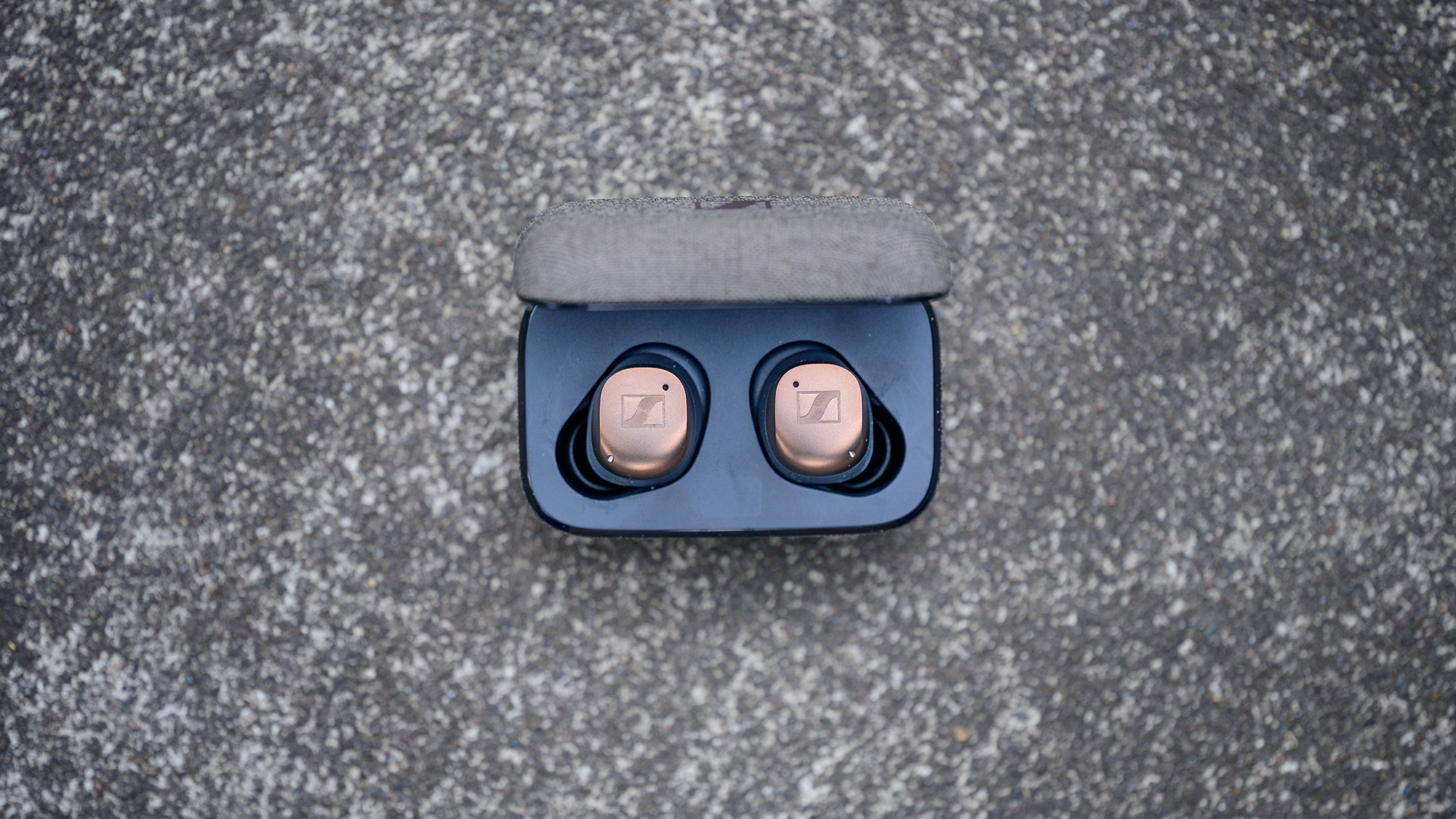
9. Sennheiser Momentum True Wireless 4
Specifications
Reasons to buy
Reasons to avoid
✅ You are looking for the highest sound quality: Larger drivers give the Momentum True Wireless 4 the best sound quality of all the earbuds in this guide.
✅ You want high-quality ANC: The Adaptive noise cancellation features an Anti Wind setting for better ANC performance when riding outside or blasting your indoor fan.
❌ You want to be able to use the mic when riding: Although Sennheiser has specced the Momentum True Wireless 4 with six speakers, I still found they struggled with wind noise.
❌ You want easy set-up: To make the most of Sennheiser's sound quality, you will need a device that supports the advanced codecs and some time to play around with the app.
I don't talk about sound quality in these small descriptions because the truth is that it's very similar between the options. When it's time to do a full review, I spend time switching between types of music and listening back-to-back between different headphones, but even in that situation, it can be difficult to distinguish differences. Still, if you want the best option, Sennheiser is pushing the boundaries of what's possible in a true wireless form factor.
One thing that the brand has done is use a relatively large driver for the form factor. An over-the-head style headphone might use a 40mm driver, but when it's time to shrink it for a true wireless design, that can drop to 6mm. Sennheiser manages to squeeze a 7mm driver into the Momentum 4 true wireless.
The other thing that boosts sound quality isn't something everyone will get to experience. As music gets transmitted between a device and the headphones, the codec used to make that possible compresses the sound in different ways. Sennheiser has a habit of being at the forefront of support for the best codecs available, and version 4 is no different. In this update, the brand is also using the latest version of Bluetooth and there’s now multipoint support.
Just keep in mind that you will need a device with support for your chosen codec as well as a source that offers it if you want to experience the benefits. In fact, expect to spend a bit of time with your device getting things set up. With my Google Pixel 8 Pro I had to dive into the app before I got the amazing sound I was expecting. Even once I got everything setup, I didn’t find the 6-mics on offer did a great job with wind noise. There’s aggressive software tuning to boost your voice but with a fan pointed at my face, I would sometimes mean the other person couldn’t hear me.
How to choose the best headphones for cycling
Unfortunately, there is no perfect pair of headphones for every situation. You came here looking for the best headphones for cycling but you have to decide what that means. Are you only looking for the best performance on the bike? Or are you looking for a pair of headphones that works for the rest of your life and on the bike as well?
Once you've worked that out, you want to think about what features matter to you. At the low end you get a pair of headphones that works for music and that's about it. As you go up in price there are options for better sound quality as well as features like active noise cancelling or hear-through modes. There are also better or worse app experiences, Bluetooth multipoint, and wireless charging as things worth considering.
If your use is on the bike, you need to think about what that looks like as well. If you plan to use headphones for indoor riding at high intensity or outdoors for long distances then there are different considerations. Riding outside actually tends to be more forgiving and that's especially true for shorter rides.
What features are important for riding indoors?
Every option on this list is something I spent time testing to make sure it would stay put in my ears. I imagined dropping a small wireless earbud out of an ear during a ride and suddenly having a very expensive paperweight with only one earbud. What I found during actual testing is that every product I tested was plenty secure once I figured out the correct sizing but there’s a little more to consider.
Many of the options achieved security through a friction fit with the ear canal. When riding inside either racing on Zwift, doing intervals, or even doing long indoor rides this would often be an issue. The amount of sweat you can manage to produce during a Zwift race is rather incredible and it's enough to reduce the friction. I found myself needing to constantly adjust the earbuds. In those situations, something with a mechanical retention design is a better choice.
Another big challenge for indoor riding is talking to someone while riding. You might need to do this during a ride or just to pass the time. It also happens to be a torture test for a headphone mic since there's a fan pointed at your face and lots of drivetrain noise. If that's your need, look for something with multiple mics as they tend to do a better job picking up your voice vs the background noise.
What features are important for outdoor riding?
I found outdoor riding to be a lot more forgiving. The greater airflow allows a friction fit design to work better, while it's less likely that I was going to talk to someone. Outside the most important thing tends to be spatial awareness. You could achieve that by only using a single earbud but you could also do it with some kind of system that allows ambient noise in. Unfortunately though both ANC and hearthrough modes don't tend to work very well because of wind on the mic.
Another consideration is the control system. If the control system is simple you can safely keep your phone stored all the time. A simple way of going forward and backwards in the song list is a great thing to look for and so is access to a voice assistant. If you can make a voice assistant work while riding then you can accomplish a wide array of tasks by just activating it and talking.
What features are important for everyday use?
This section is really a discussion about active noise cancelling, hearthrough mode, multi-point Bluetooth and battery life. Hearthrough and active noise cancelling use the same system and it's a series of mics that listen for external noise and process it in real time. When you have noise cancelling turned on, the headphones use the info to reduce the incoming noise. Hearthrough instead uses the info to recreate the sound through the headphones. In everyday use they add a lot of value and if you've got the budget, it's worth seeking them out.
For the purposes of our discussion, the main challenge with these systems is that they aren't useful when riding a bike. Outdoors the wind tends to confuse the mic for hearthrough modes and active noise reduction isn't that effective plus it's not safe for riding outdoors.
Indoors both modes do work but it can feel very odd to ride with a lack of sound because of a good active noise cancelling system. It all goes back to the point made in the beginning that there's not a universal pair of headphones that's best at everything. Adding active noise cancellation is better for everyday use but expect to turn it off when riding a bike. If you are buying a product focused on riding, there's no need to pay for the feature.
Two things that do bridge the gap and find use in both situations are battery life and multi-point Bluetooth. When it comes to battery life, longer is better but that’s a challenge for small true-wireless options.
The way that most brands get around this is with quick charging. Typically, five minutes of charging a single earbud will give a lot of additional listening time and you can swap earbuds back and forth. Letting one charge while using the other will make for much longer battery life with uninterrupted use but make sure the IP rating of the case will work for your needs.
The other feature that’s a joy to have in almost every situation is multi-point Bluetooth. It allows you to connect to two devices, then your headphones will play the sound from whichever is active. For me that means my phone and a computer and it means when I get on my bike indoors I can run Zwift or watch a movie on my computer but still answer the phone if someone calls.
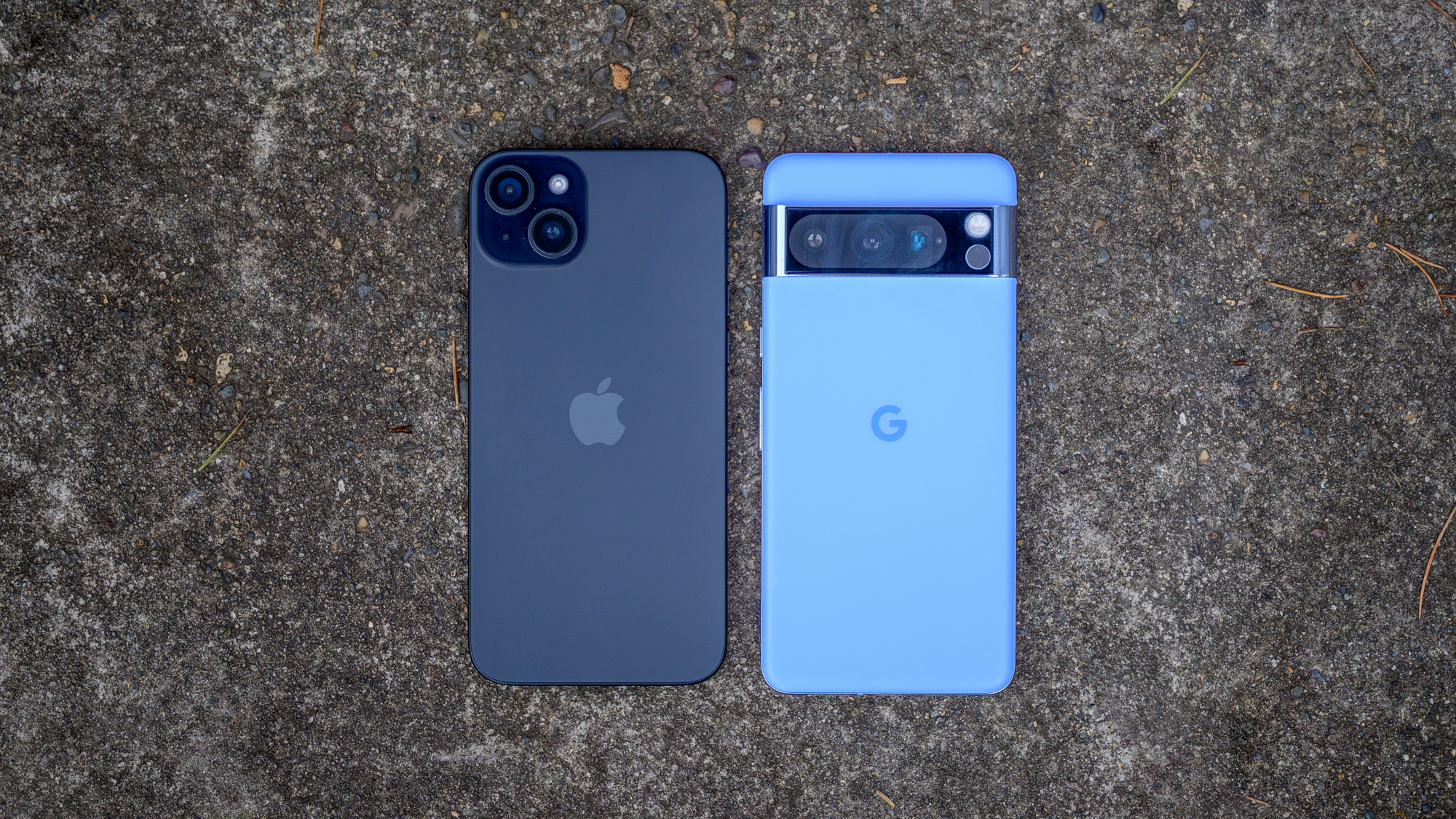
How did we test the best headphones for cycling?
If you spend time on a bike it's likely you listen to music. Just like you, I listen to music while I'm riding. I spent time with each option, testing inside on long rides and inside during high intensity workouts and Zwift races. I made phone calls and asked for feedback on how easy it was to hear me while riding hard with the fan on high.
Then I took the options outside and spent long hours passing the time riding and listening to music. With a quality set of options put together, I then spent time with each product while working, cooking dinner, watching YouTube, and generally living a regular life.
During all this testing, I used a Google Pixel 8 Pro as my primary testing device but I also borrowed an iPhone 15 Plus to compare how things worked with iOS. After testing and researching, I've put together a wide range of options for different people with different needs.
The latest race content, interviews, features, reviews and expert buying guides, direct to your inbox!
Josh hails from the Pacific Northwest of the United States but would prefer riding through the desert than the rain. He will happily talk for hours about the minutiae of cycling tech but also has an understanding that most people just want things to work. He is a road cyclist at heart and doesn't care much if those roads are paved, dirt, or digital. Although he rarely races, if you ask him to ride from sunrise to sunset the answer will be yes. Height: 5'9" Weight: 140 lb. Rides: Salsa Warbird, Cannondale CAAD9, Enve Melee, Look 795 Blade RS, Priority Continuum Onyx
